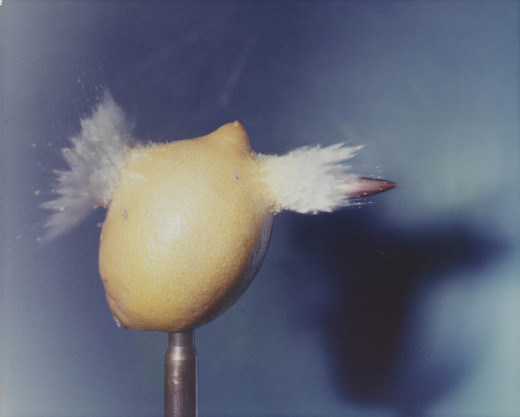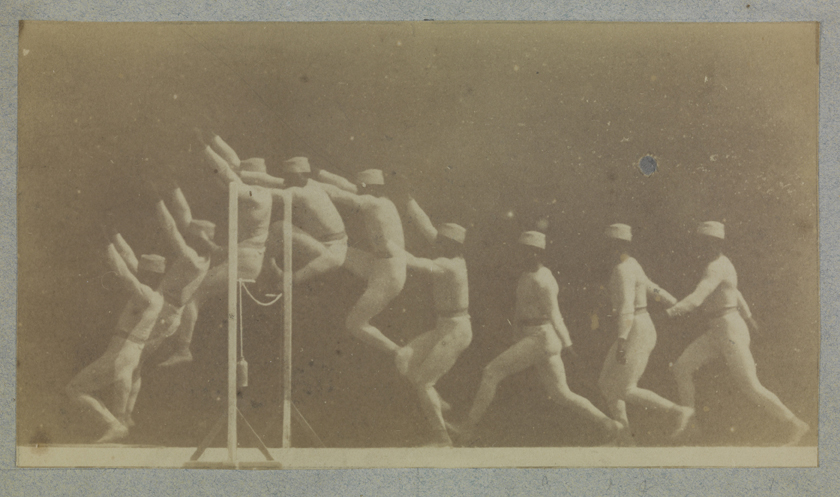Revelations: Experimentations in Photography traces the impact of early scientific experiments on the history of photography and showcases the innovative scientists and artists who strived to see the world anew.

Early pioneers like Alan Archibald Campbell-Swinton and Eadweard Muybridge were driven by a desire to reveal the invisible processes and structures of our physical world. This desire is still with us and today there are countless magazines, websites and blogs dedicated to sharing photographic experiments – both dark room and digital – but has the popularisation of these once revolutionary photographic techniques – x-rays, high-speed photography photomicrography etc. – diminished the ‘revelatory’ impact they once had? After all, a revelation only happens once.
The development of technology over the last 100 years has made photography popular and accessible. Almost all of us carry a relatively high quality camera with us on our phones these days, and digital reproduction has expanded the audience for photographic experiments.
Bernice Abbott’s now iconic MIT photographs became widely known as illustrations in physics textbooks but today blogging and photo-sharing websites like Flickr and Instagram foster a much wider, international audience for photographic experimentation.
Harold Edgerton’s early experiments helped to popularise the stroboscope; a once obscure laboratory device for photographing objects at high speed; and now slow motion photography is part of our everyday visual language.
Ubiquitous on advertising billboards and in music videos, slow motion imaging is also an internet phenomenon; the Slow Mo Guys, a Youtube channel dedicated to capturing high-speed processes like exploding watermelons and bursting balloons, have 5.5 million subscribers and over 500 million views.
Thanks to pioneers such as Edgerton and Étienne Jules Marey, many of the photographic techniques featured in Revelations have become a familiar part of our visual culture, but we shouldn’t forget how astounding these techniques once were.

The story goes that when French film pioneers the Lumière brothers first screened their film Train Pulling Into a Station in 1895, audiences jumped out of their seats for fear of their lives. Early films like this one had a frightening effect on people because of their novelty – it was unlike anything they had experienced before.
A hundred and twenty years of cinema history later and we have become very used the medium of film, so that a sequence of a train pulling into a station is unlikely to carry the same impact (although more recent advances in 3D technology and motion simulation as featured in the Science Museum’s IMAX and Discovery Motion Theatre might come closer to simulating the original shock of the Lumière brothers’ film!).
The innovative photographic techniques displayed in Revelations may have lost their novelty but viewing these photographs today it is hard to deny how striking and effective they still are as images.
Why is this?
Certainly it helps that the exhibition frames them in terms of their historical significance, which makes their innovative aspect clear. The remarkable aesthetic quality of these early photographs is also important to consider, and this is especially evident when you see them alongside art photography (the great originality of this exhibition).
The photographs taken by Edgerton during his time at the Massachusetts Institute of Technology demonstrate a visual sensibility in their complementary pastel backgrounds and Alfred Ehrhardt and Carl Strüwe’s photomicrographs show an interest in the ‘abstract beauty’ of microstructures.

No doubt the experiments in photography being carried out today and shared online to vast audiences will soon lose their initial ‘novelty’ impact. Whether their value as striking and ‘revelatory’ images will last, however, is a question for future generations.
Adam Stoneman is an Explainer at the Science Museum.
Revelations: Experiments in Photography is at Media Space until 13 September 2015. Click here to book tickets. An accompanying book edited by co-curator Ben Burbridge, entitled Revelations and co-published with MACK, is available to buy online from the Science Museum Shop. The exhibition transfers to the National Media Museum, Bradford where it will run from 19 November 2015 to 7 February 2016.